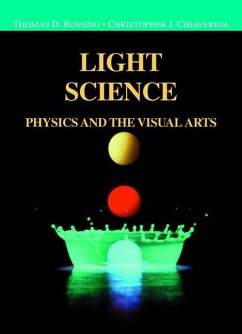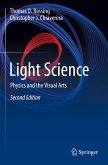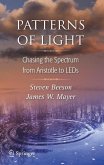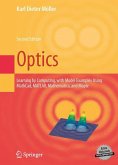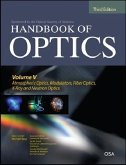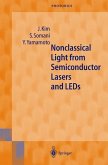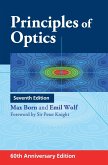Visual arts depend on light to communicate, and an understanding of the physical properties of light and color should enhance the communication for both the artist and the viewer.
This book is intended for students in the visual arts and for others with an interest in art, but with no prior knowledge of physics. It presents the science of light - that is, the science behind what and how we see. The approach emphasizes phenomena rather than mathematical theories and the joy of discovery rather than the drudgery of derivations - the opposite of "heavy science".
The text includes numerous problems, questions for discussion, and suggestions for simple experiments. It considers such questions as
- why is the sky blue?
- what is the nature of light?
- how do mirrors and prisms affect the color of light?
- how do compact disks work?
- what can visual illusions tell us about the nature of perception?
And it discusses such topics as: the optics of the eye and camera; the physiology of the eye and the nature of color vision; the different kinds of sources of light; photography and holography; symmetry in art and nature; color in printing and painting; computer imaging and processing.
Hinweis: Dieser Artikel kann nur an eine deutsche Lieferadresse ausgeliefert werden.
This book is intended for students in the visual arts and for others with an interest in art, but with no prior knowledge of physics. It presents the science of light - that is, the science behind what and how we see. The approach emphasizes phenomena rather than mathematical theories and the joy of discovery rather than the drudgery of derivations - the opposite of "heavy science".
The text includes numerous problems, questions for discussion, and suggestions for simple experiments. It considers such questions as
- why is the sky blue?
- what is the nature of light?
- how do mirrors and prisms affect the color of light?
- how do compact disks work?
- what can visual illusions tell us about the nature of perception?
And it discusses such topics as: the optics of the eye and camera; the physiology of the eye and the nature of color vision; the different kinds of sources of light; photography and holography; symmetry in art and nature; color in printing and painting; computer imaging and processing.
Hinweis: Dieser Artikel kann nur an eine deutsche Lieferadresse ausgeliefert werden.
...aspects of this book are gems and I felt almost driven to want to develop a course which might be based on sections of it...the authors show deep knowledge of and empathy for their material. It is fascinating and close to inspirational...the experiments are the crowning glory and make the book worth every penny for the university teacher of light and optics. This is brilliant stuff. --The Physicist

